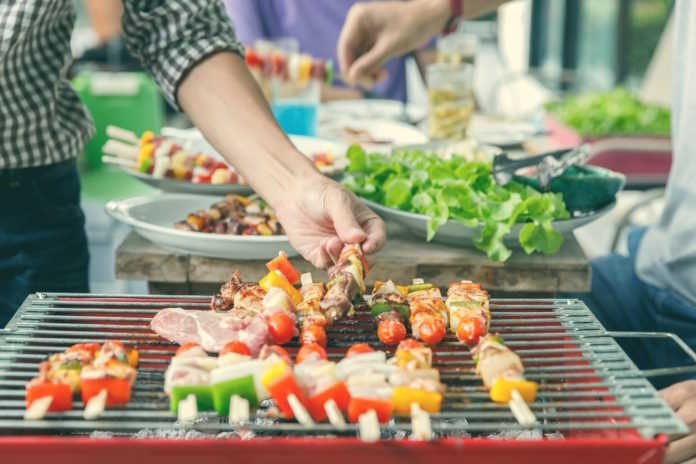Load shedding dishes up a wide range of inconveniences and frustrations, but it may well be having far more serious effects when it comes to our eating habits. There are increasing concerns that extensive and sustained power cuts are leading to a rise in fast food consumption as South Africans experience fewer undisrupted opportunities to prepare fresh meals at home. It’s our health, and the health of our loved ones that will take a toll from this pivot to takeaway and convenience meals.
Registered Dietitian, Zitandile Mfono, who is also a spokesperson for ADSA (Association for Dietetics in South Africa), says, “It’s a pity that the positive home cooking trend we saw during Covid lockdowns is now being reversed due to the frequency of load shedding during meal preparation times. It’s already a challenge for working parents to put healthy, home-cooked meals on the table due to their busy lives, and now they must contend with power outages just as they get home from work and start to focus on making dinner. It’s not surprising that people are opting for more convenience foods in these difficult circumstances. However, this means an increase in high fat, high salt and high sugar foods in the family diet. With the country’s high rates of obesity and Type 2 diabetes, these are the kind of dietary changes our nation cannot afford. In addition, at a household-level, increased consumption of takeaway foods leads to higher monthly food costs.”
Zitandile recommends investing in, or even making your own, ‘wonder cooker’ which uses heat-retaining technology to slow-cook food without the need for electricity or gas. The wonder cooker, also known as a wonderbag works like a slow cooker but requires no electricity or gas. It can be used to prepare any recipe that involves boiling, roasting, simmering or steaming food. It can also be used to keep food warm for hours, like a thermos flask. Zitandile says, “You can prepare and bring a pot of soup or pap to the boil in the morning before work, take it off the stove and tuck it into wonder cooker for the day. The heavily insulated bag will keep it at a low safe temperature for hours, and when your return from work in the evening, you will have warm, fully cooked food waiting for you. Wonderbags are hand-made, and you can find patterns and tutorials online, which makes it an economical solution for families.”
According to Chanelle Retief, also a Registered Dietitian and ADSA spokesperson, there are some hacks that can help you to keep your focus on your family’s healthy lifestyle despite the hardships of load shedding. She says, “We need to adapt to load shedding as best we can, and while ordering in takeaways can be a quick fix for a hungry family, the longer-term impacts on our health and our pockets mean this is not a sustainable solution.”
Chanelle recommends:
- Invest in an inexpensive gas stove back-up – “You don’t have to go out and replace your oven with a gas alternative. Rather invest in a small two-plate gas stove to use when you need to cook while there is load shedding. The added benefit of gas is that it heats up much quicker than an electric stove, so you should save on cooking time as well as energy costs.”
- Focus more on salad-based meals – “Add a few more tasty salad recipes to your repertoire so that you can put together delicious and filling meals when the power is off. When making a salad for lunch or dinner, always try to add a protein source to it by including leftover cooked chicken or meats, lentils or beans, eggs or cheeses. Tinned tuna is also a great load shedding alternative as it does not need any cooking or heating.
- Plan ahead and in more detail – “The old saying ‘failing to plan, is planning to fail’ is so true when it comes to power outages. It makes it easier to manage the impact of load shedding on meals if you plan meal preparation, and the details of each of the upcoming week’s meals. Integrate your schedule and the load shedding schedule, so that when you shop for food, you buy only what you know you need and can prepare.”
- Make healthier choices if you are ordering in – “If you really have no choice and you need to buy takeaways – keep the plate model in mind. 50% of your plate should be veggies, 25% should be healthy carbs and 25% should be lean protein. Try and stay away from anything that is fried or ‘creamy’. Never opt for the ‘upsize’ or ‘buy one get one free’ options.”
- Be aware of increased food waste – “If your cooking gets interrupted frequently, or load shedding often kicks in before you get started, you may find that you are throwing away greater quantities of food. Remember that food waste is a preventable expense. Being conscious of avoiding food waste will help you to use up what you have in your fridge before it spoils. If you don’t think it’s likely you will consume the food you have in time, then rather donate it.”
While we have to live with load shedding, we can look to mitigate the potential harms. As we adapt to meal disruptions, it may be time to try new ways of maintaining the family’s healthy lifestyle. Chanelle concludes, “Despite the hardships of load shedding, we must keep our focus on the family making healthy eating choices daily. This may mean that we need to try out some new recipes and dishes, such as nutrient-dense smoothies, salads that include protein and grain bowls.”












